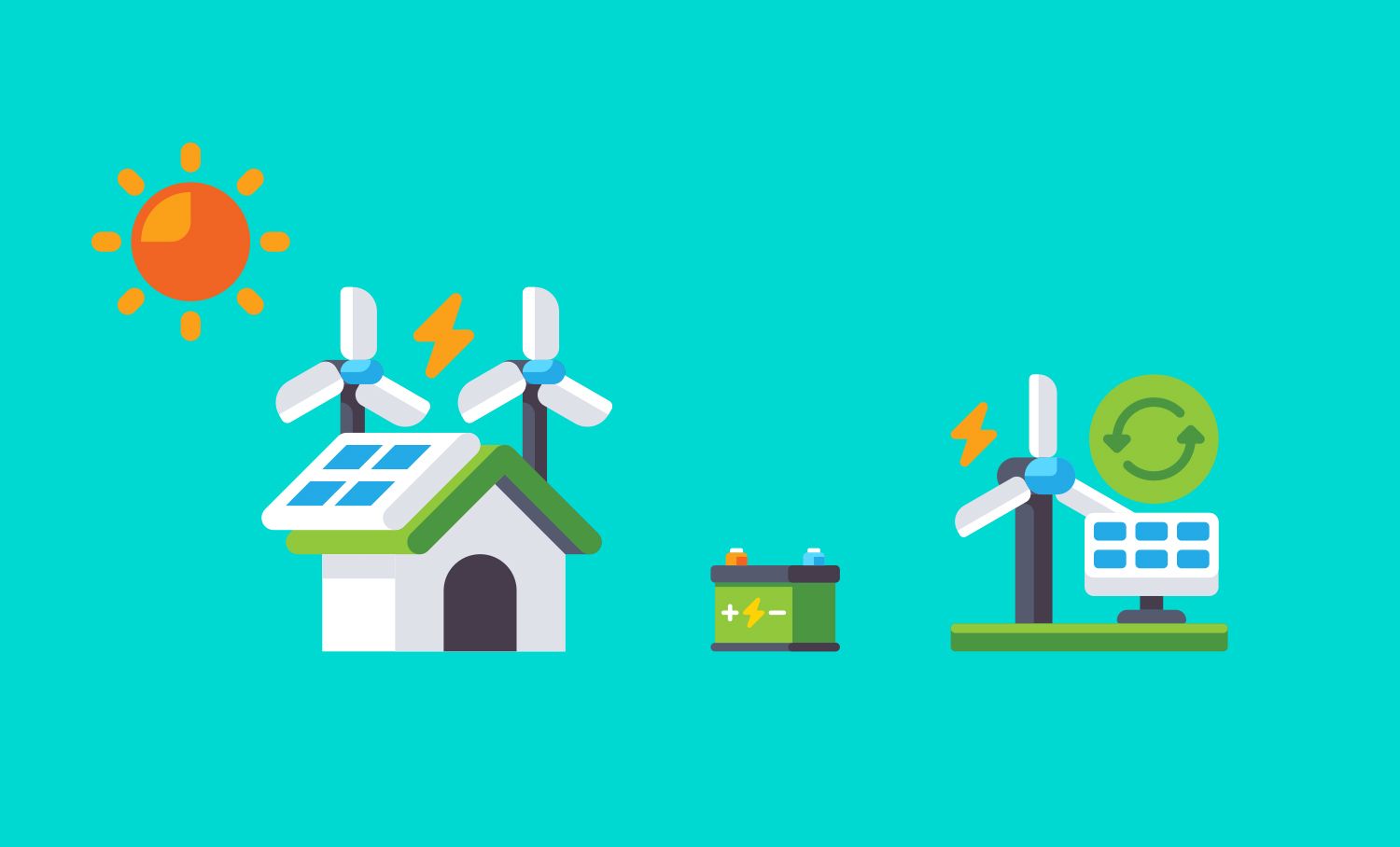Microgeneration and Decentralising the Energy Grid

Why is microgeneration important?
The use of microgeneration is key to decentralising the energy grid as it could allow for more uptake of renewables and thus a reduction in overall greenhouse gas (GHG) emissions.
Microgeneration involves the installation of small generators, such as solar PV or wind turbines, by individual households or businesses, which produce electricity and can reduce the amount that would otherwise be used from the grid (and sometimes even contribute back to the grid). As mentioned, this can help to increase overall levels of renewable electricity, it also allows the consumer to participate in the energy transition in an active role.
The most widely adopted microgenerators include:
· Photovoltaic (PV) panels,
· Solar thermal systems,
· Heat pumps (ground sourced, air sourced and water sourced)
· Other such as micro wind/hydro turbines,

Solar Photovoltaic (PV) Panels
The purpose of a solar panel system is to absorb sunlight, also known as photovoltaic energy (PV), and convert it to direct current (DC) power. The key components to solar panels are called photovoltaic cells. Each individual PV panel contains a number of these cells, which are all sandwiched between two layers of semiconducting material. These cells absorb photons by gathering light provided by the sun.
The solar PV panels then convert this sunlight to direct current (DC). Another component of the solar PV system called an inverter then turns this into alternating current (AC). This is the type of power that most households run on. If it’s so sunny that your solar system produces more electricity than you can consume, that AC power can then goes back to the grid (if safe to do so).
The number of panels in a system and the power outage of each of these individual panels (kWp) corresponds directly to the amount of energy produced by the solar PV system. This means that in order to create a solar system that can power a house or building, you would require an array with many solar panels connected together. Typical system configurations can consist of between 6 – 18 panels depending on the consumer’s energy demand and roof size. Solar PV panels can work even on cloudy days, as they need daylight (‘diffuse’ light) not sunlight (‘direct’ light).

Solar Thermal Systems
Solar thermal panels convert energy from the sun into heat for heating hot water. Whilst this power is generally used for water heating, it can also be used to provide heat for the building. The system consists of panels that are installed on the roof, similar to PV panels. The heat from the sun on the panels in turn heats up the liquid in the tubes within the panels. This heated liquid is then transported into a hot water tank. It is stored here until it is ready to be used.
Solar thermal technology is more space efficient than solar PV. The panels tend to take up less space on the roof, making it ideal for those with less roof space. Solar thermal also has a high efficiency rate, as it is less sensitive than solar PV to light, therefore it works better on cloudier days. Solar thermal systems are an environmentally friendly solution for heating water if there is a hot water cylinder already installed in the building.
Heat Pumps
Electric heat pumps are a good alternative to gas for heating a building, they can also cool the building in the summer, depending on the temperature regulation needed. Heat pumps function by essentially moving heat: they are a singular system that either brings heat inside when it’s cold or moves heat outside when it’s hot.
Traditional heaters generally convert their power source into heat which can be inefficient and energy intensive. Instead, heat pumps only use a small amount of electricity, as they either draw in heat from the air, or from the ground around the building and use it to warm the building. And in reverse, the pump cools the building by pulling the warm air out of the building, rather than using energy to cool air from outside.
Electrical heat pumps use a compressor to draw heat from a low temperature source, such as external air or ground to heat the building interior, and a heat pump typically will produce three to four units of heat for every unit of electricity consumed. Heat pump systems have integrated heating controls, there are various types of heat pumps available to fit differing functions.
Heat pump systems that pull heat from the air, use an external unit and do not require underground piping to source heat. They are often cheaper and easier to install compared to ground source heat pump systems, however these units do not heat water. This is why air to water heat pump systems are the most popular choice of system. Heat is distributed through radiators and underfloor heating and they can also produce hot water. Exhaust-air to water heat pump systems are similar to air to water but include mechanical extract ventilation and recover heat from air drawn from the building.

Other Forms of Microgeneration
The options discussed are some of the more widely adopted forms of microgenerators, however, there are several other forms of microgeneration available, including micro combined heat and power (CHP), micro wind, fuel cells and micro hydro schemes.
As stated in the outset, microgeneration is key to decentralising the energy grid. This could allow for more consumers to play an active role in transitioning to net-zero. By using renewables, even on a small scale, overall greenhouse gas emissions will be reduced. This impacts the environment on a local, national and even global level.
Microgeneration is just one component in the wider transition to net-zero, but it is certainly a good place to start.
References:
https://www.cru.ie/wp-content/uploads/2020/05/CRU20059-Microgeneration-Information-Paper.pdf
https://www.seai.ie/grants/home-energy-grants/heat-pump-systems/